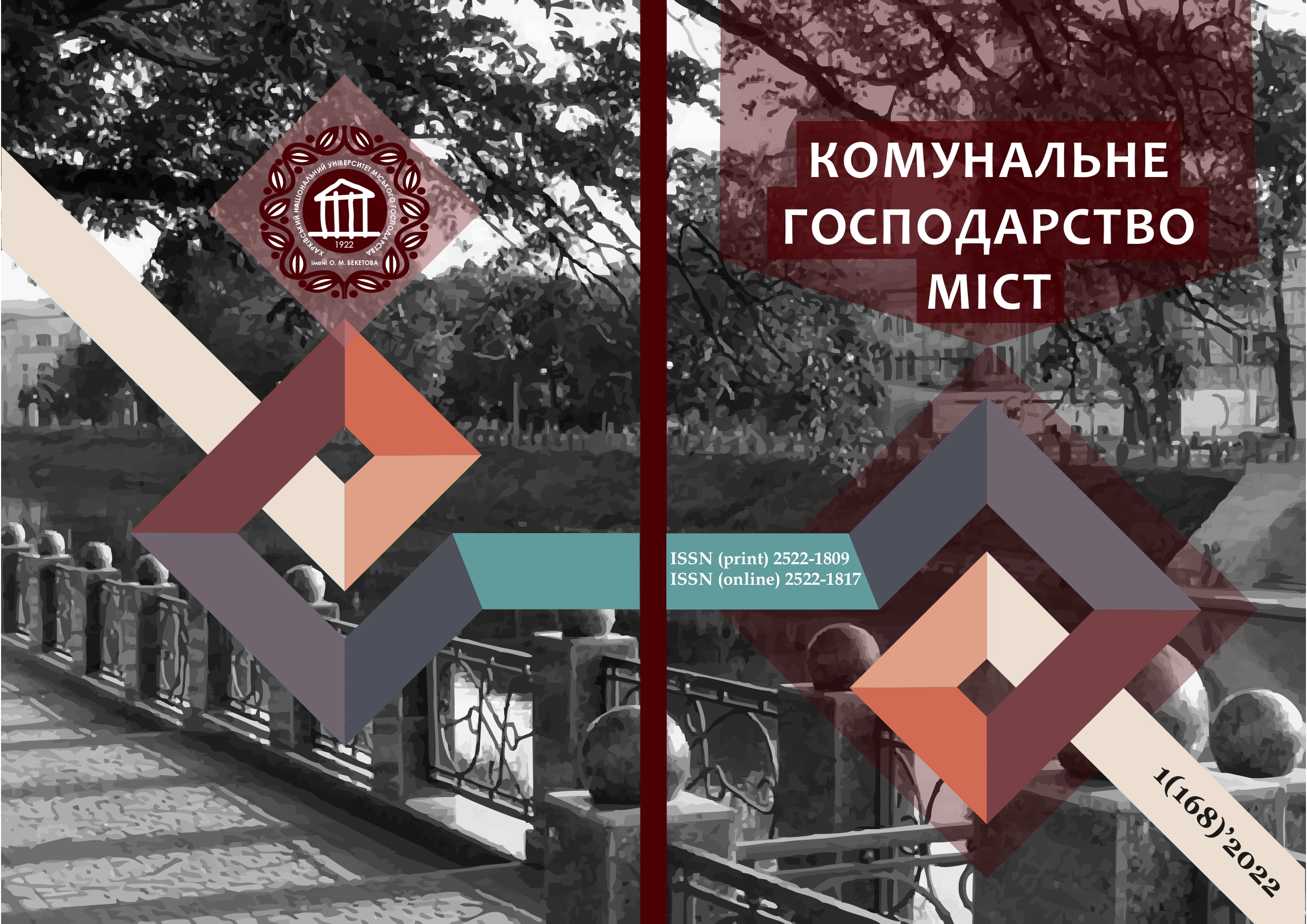FORECASTING THE AEROIN COMPOSITION OF AIR IN THE PRESENCE OF NATURAL AND ARTIFICIAL SOURCES OF IONIZATION
Array
DOI:
https://doi.org/10.33042/2522-1809-2022-1-168-129-133Keywords:
aeroion, artificial ionization, recombination, electrostatic field.Abstract
It is shown that for the design of buildings and individual rooms with normative concentrations of light air ions of both polarities, a preliminary estimated assessment of the dynamics of this indicator in space and time is appropriate. In the general case, it is possible to use the continuity equation for weakly ionized plasma for one direction. This is due to the low concentration of air ions in the air. The ratio of molecular kinetic theory of gases is used to determine the necessary indicators - the average lifetime of air ions, free path length. To determine the average speed - Maxwell's distribution. It is shown that the propagation of air ions due to diffusion processes is insignificant, and the corresponding calculations have large errors. Calculations on the propagation of air ions by directed air movement from the source of artificial ionization are given. The distribution of air ion concentrations can be most accurately calculated taking into account their recombination, deposition on heavy air ions and neutral suspended parts (fine dust and aerosols). Relevant coefficients are mostly issued from reference sources. If there are electrostatic fields in the premises, generated due to the triboelectric effect and other factors, it is necessary to take into account the deposition of air ions on these surfaces. In order to correctly determine the concentrations of air ions, in addition to the values of the mobility of negative and positive air ions, data on electrostatic field strengths are required. The values of such fields are unpredictable, so they are measured by appropriate instruments in similar conditions. Verification of calculated data using electrostatic charge meters and air ion counter proved the reasonable convergence of expected and actual data. It is advisable to develop two- and three-dimensional models of the propagation of air ions of both polarities in rooms of different purposes, configurations of equipment placement, the presence of artificial ionization sources and directional air movement.
References
2. Magnier-Bergeron, L., Derome, D., Zmeureanu, R. (2017). Three-dimensional model of air speed in the secondary zone of displacement ventilation jet. Building and Environment, 114, 483–494. DOI: https://doi.org/10.1016/j.buildenv.2017.01.003
3. Belyaev, N.N., Cygankova, S.G. (2015). Matematicheskoe modelirovanie aeroionnogo rezhima v pomeshenii pri iskusstvennoj ionizacii vozduha. Stroitelstvo, materialovedenie, mashinostroenie, 83, 40–46. [in Russian]
4. Kuzmichev, V.E. (1989). Zakony i formuly fiziki. Kiev, Naukova dumka. [in Russian]
5. Fletcher, L.A., Noakes, C.J., Sleigh, P.A., Beggs, C.B., Shepherd, S.J. (2008). Air Ion Behavior in Ventilated Rooms. Indoor and Built Environment, 17(2), 173–182. DOI: https://doi.org/10.1177/1420326x08089622
6. Glyva, V., Bakharev, V., Kasatkina, N., Levchenko, O., Levchenko, L., Burdeina, N., Guzii, S., Panova, O., Tykhenko, O., Biruk, Y. (2021). Design of liquid composite materials for shielding electromagnetic fields. Eastern-European Journal of Enterprise Technologies, 3 (6(111), 25–31. DOI: https://doi.org/10.15587/1729-4061.2021.231479
7. Chenchevoy, V., Sukach, S., Chencheva, O., Fjodorova, N., Hryhorieva, D. (2020). Study of parameters of hydro-aero-ionic composition of working room air with ultrasonic ionization. Journal of Donetsk Mining Institute, 2(47), 168−174. DOI: https://doi.org/10.31474/1999-981x-2020-2-168-175 [in Ukrainian]
8. Glyva, V., Nikolaiev, K., Tykhenko, O., Tymoshenko, O. (2019). The study of physical factors levels in the control tower service premises of civil aviation airport. Control, navigation and communication systems, 1(53), 32−35. DOI: https://doi.org/10.26906/SUNZ.2019.1.032 [in Ukrainian]
9. Belyaev, N.N., Cygankova, S.G. (2015). Ocenka aeroionnogo rezhima v rabochej zone pri isskustvennoj ionizacii vozduha v pomeshenii. Naukovij visnik budivnictva, 3(81), 158–161. [in Russian]
Downloads
Published
How to Cite
Issue
Section
License
The authors who publish in this collection agree with the following terms:
• The authors reserve the right to authorship of their work and give the magazine the right to first publish this work under the terms of license CC BY-NC-ND 4.0 (with the Designation of Authorship - Non-Commercial - Without Derivatives 4.0 International), which allows others to freely distribute the published work with a mandatory reference to the authors of the original work and the first publication of the work in this magazine.
• Authors have the right to make independent extra-exclusive work agreements in the form in which they were published by this magazine (for example, posting work in an electronic repository of an institution or publishing as part of a monograph), provided that the link to the first publication of the work in this journal is maintained. .
• Journal policy allows and encourages the publication of manuscripts on the Internet (for example, in institutions' repositories or on personal websites), both before the publication of this manuscript and during its editorial work, as it contributes to the emergence of productive scientific discussion and positively affects the efficiency and dynamics of the citation of the published work (see The Effect of Open Access).

